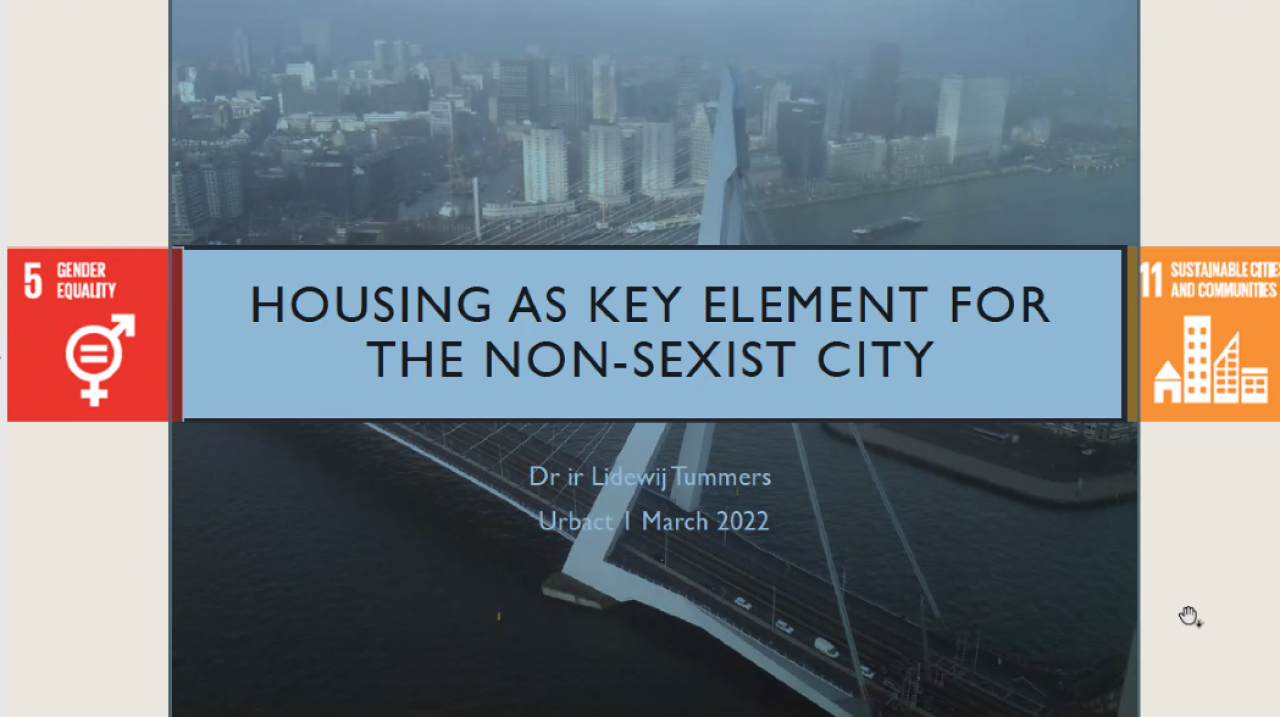
Gender and urban development are intimately interrelated in many ways. At the transnational meeting in March 2022 the network made visible gendered power structures in housing in a panel organized by URBACT expert Laura Colini.
The right to adequate housing is a central component of women's right to equality under international human rights law. However, there are several examples of gender-based inequality and discrimination in housing structures around Europe. To begin with, inequality in housing has an economic nature. On average, women earn less money, work part-time more and are on parental leave for a longer period than men, which affects the affordability of housing. This leads to an increased vulnerability for women and girls to enlarged housing costs and acts of domestic violence and sexual abuse when alternative safe housing is not available or when living in homelessness.
Michaela Kauer, expert on housing policies and architect Lidewej Tummers-Muelle brought different perspectives on gender and housing to the meeting. However, both stressed the fact that the housing sector (especially the decision-making positions) is dominated by men. This inevitably affects the way our cities and houses are built today. Hence, inequality in housing is not only a question of gender inequality in economic resources. There has historically been very little awareness about the needs of groups strongly rooted in a specific site, such as children, the growing group of elderly persons, and persons handling household and family work (mainly women) in the actual construction and planning of houses and neighborhoods.
However, there are initiatives being made to change the norms that have governed the construction sector for centuries. Today there is a growing number of examples of variable housing models enabling everyday use in new ways. For example, flexible flat layouts which can be adapted to the varying requirements of different life phases, communal spaces, playgrounds within sight and earshot of flats, adequate provision of the housing environment with shops and services etc. which benefit resident groups who spend a lot of time inside the flat and its direct environments.
Even though there is a changing climate around Europe for new ideas and innovation in construction. Lidewej Tummers-Mueller points out that gender equality goes beyond housing. If the care work has better conditions, is it by default more equally divided? We still need to keep working to make visible the deeply rooted gendered norms. There are many things that can enable and restrict different groups of people to varying degrees. Hence, when working with gender equality in urban planning, you need to know a little bit about a lot. It is never a one size fits all solution, instead, we need to continually place the problem in the context of our cities.
